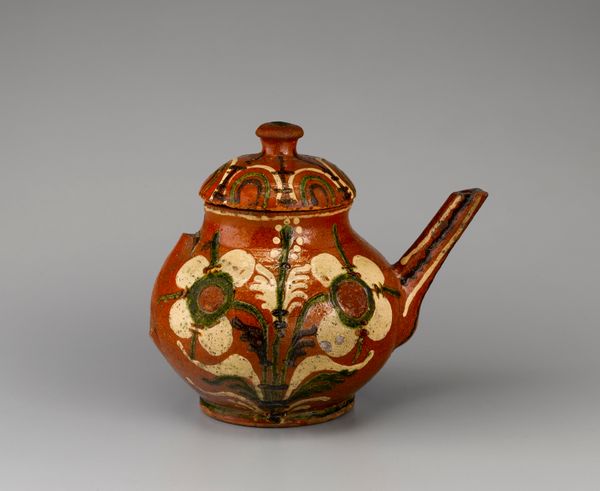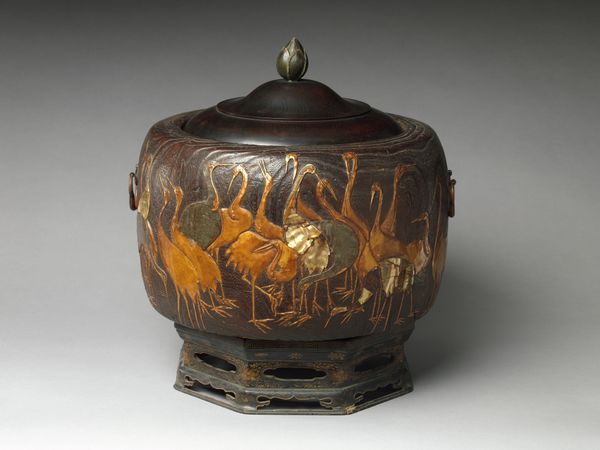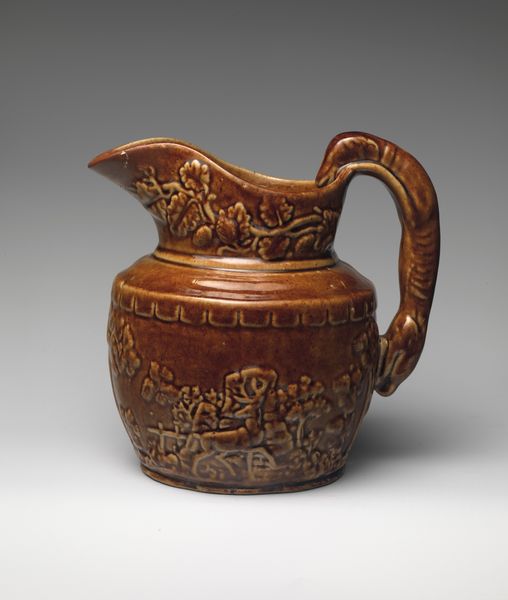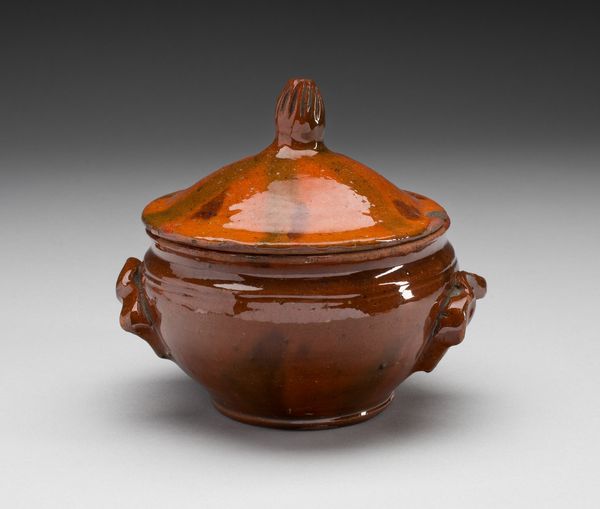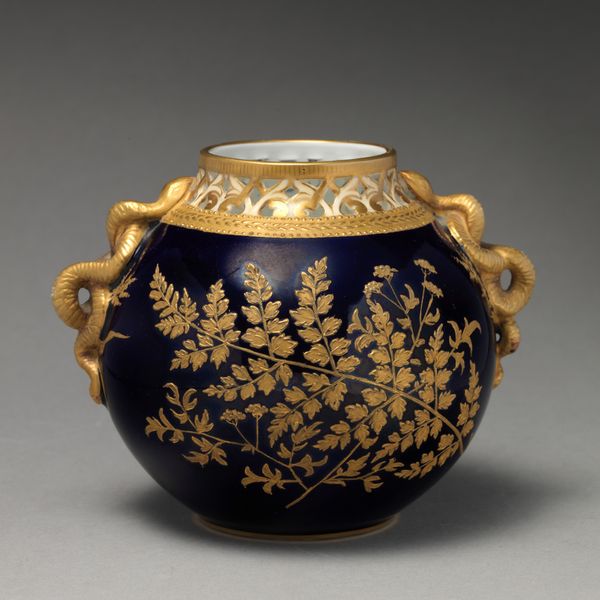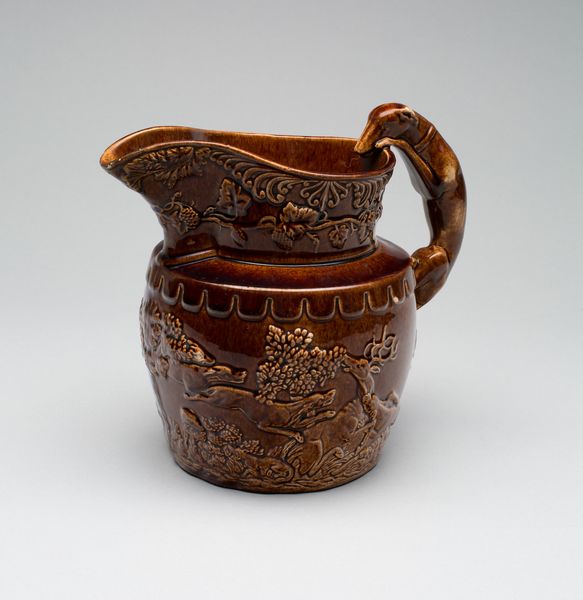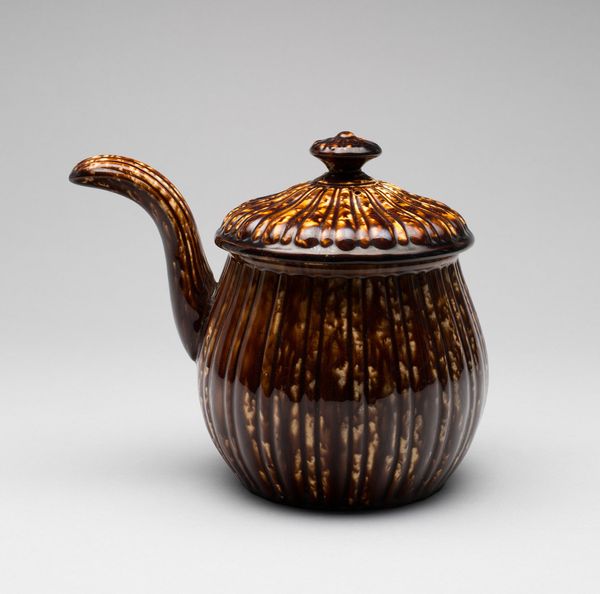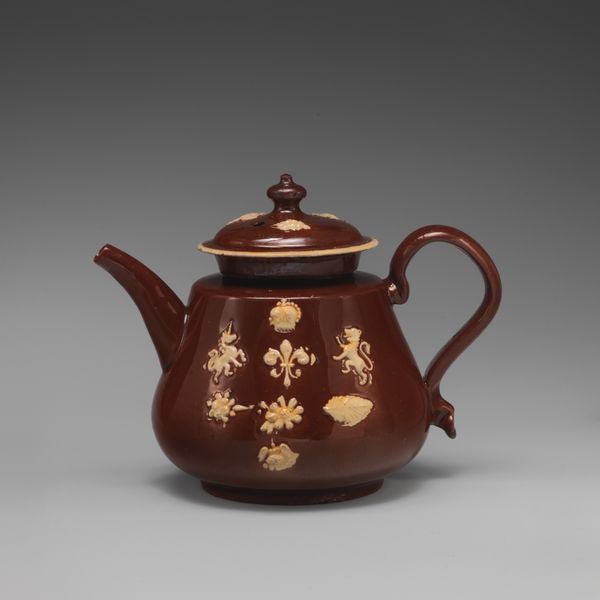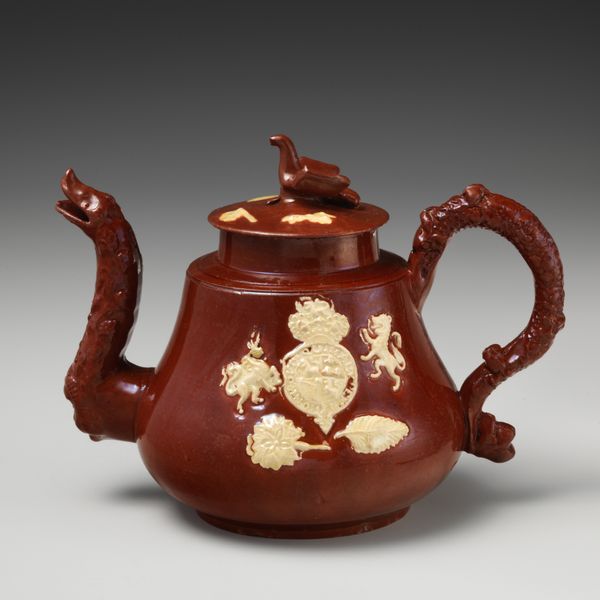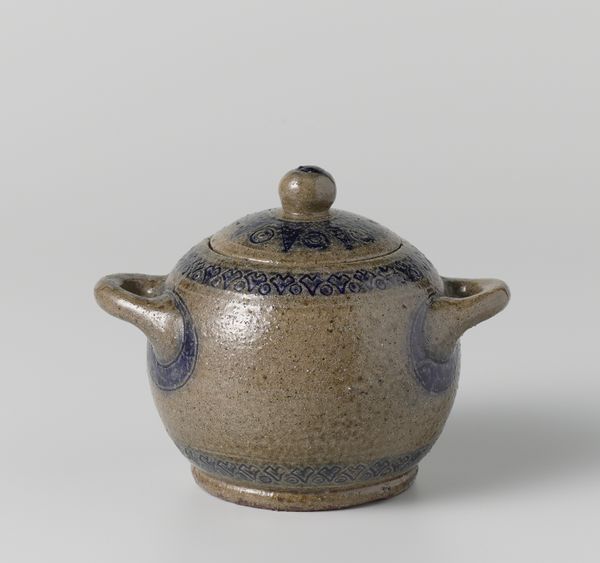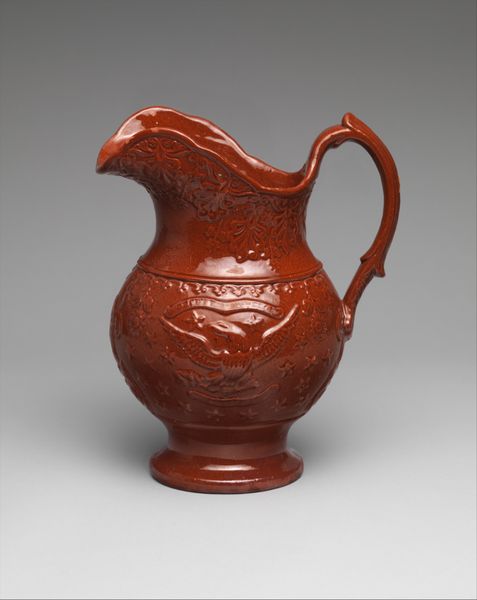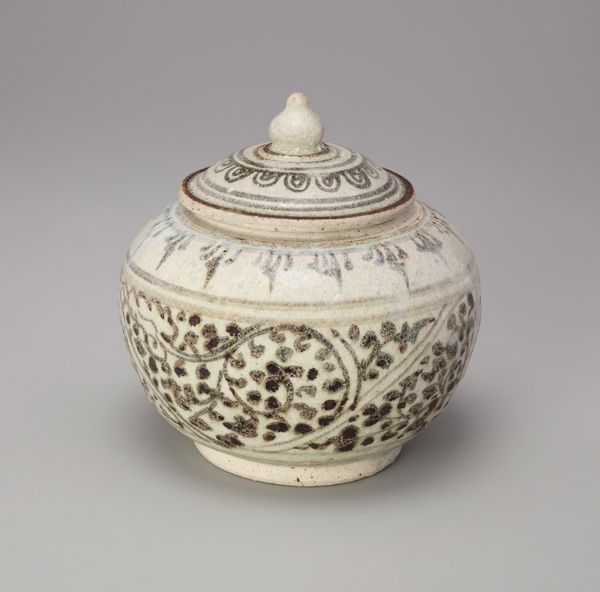
ceramic
#
ceramic
#
decorative-art
Dimensions: H.: 11.7 cm (4 5/8 in.)
Copyright: Public Domain
Curator: The dark, glossy glaze immediately catches the eye. Editor: Indeed. Here we have a ceramic sugar bowl with a cover, estimated to have been crafted sometime between 1840 and 1890. The Art Institute of Chicago is its current home. It's so richly brown. What's your initial reaction? Curator: The piece speaks to a period obsessed with craftsmanship. You can tell it was meticulously created with evident concern to create beauty in the everyday. What about you, what strikes you? Editor: It reflects a growing consumer culture. As sugar became more accessible and affordable during this era, sugar bowls became fashionable signifiers of middle-class respectability and family hospitality. How do you perceive its process in making and its relation to function? Curator: Looking closely, you notice the decorative detailing. See the molded oak leaves and acorns encircling the bowl. These details give some idea of the high labor costs, since everything had to be carefully moulded, probably by multiple specialized hands to accomplish a final shape and image. Also, let us consider the cultural background with more nuances in shape, colors, and ornament that may not be of this oak flora style. Do you observe something similar? Editor: That’s a fine observation. Consider the setting and socio-political issues in Europe or North America at the time this bowl was manufactured and used. From its initial creation to its place in homes, social conventions or gender dynamics were very probably implicated. Can we see through it an image of home decor and how they can speak about cultural norms? Curator: Absolutely. The means of production and its utility merge in an attempt to uplift daily activities to the state of Art, so one can experience pleasure using the objects. I believe this bowl elevates the dining ritual, wouldn't you agree? Editor: Yes. Objects like these remind us how much everyday aesthetics are infused with cultural, historical meaning and social issues and their symbolic role in representing ideas through decorative style. Curator: A valuable object lesson in looking beyond mere surface appearances, then. Editor: Precisely. This bowl does indeed become more evocative the more you reflect on its role and history.
Comments
No comments
Be the first to comment and join the conversation on the ultimate creative platform.
